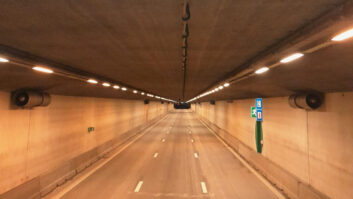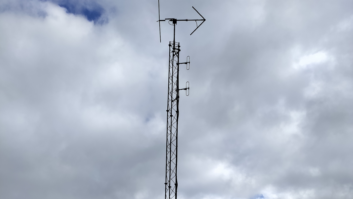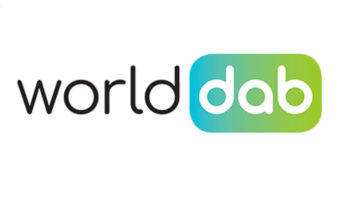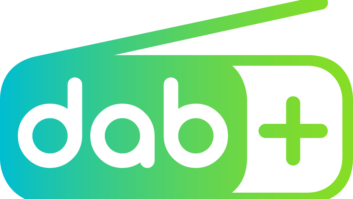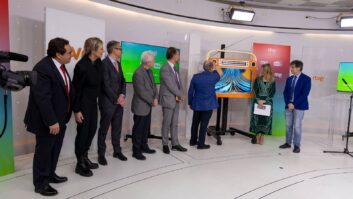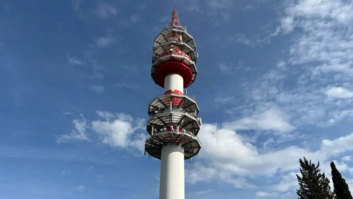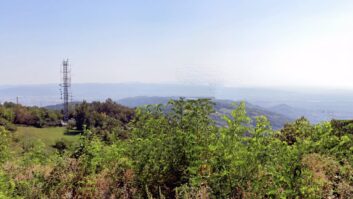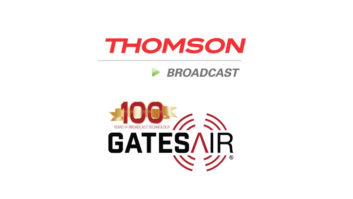STOCKHOLM, Sweden — The Swedish government halted digital radio investments in 2005 due to low consumer response. However, interest in digital radio remains.
Network operator Teracom has been conducting tests of DAB, DAB+ and T-DMB. The tests include programming from commercial, community and public service broadcasters.
According to the WorldDMB Forum, DAB+ is an additional DAB audio codec based on MPEG-4 HE-AAC v2, developed by Coding Technologies, often referred to by the trade names eAAC+ or aacPlus v2.
DAB+ is backwards compatible to the current DAB standard. DAB, DAB+ and T-DMB are all part of the Eureka-147 family of standards; T-DMB was designed for the broadcasting of multimedia applications such as mobile TV to handsets and mobile devices.

DAB+ test transmissions originate from the Nackasandaren transmission site near Stockholm. According to WorldDMB, the organization promoting Eurkea-147-based technologies, more than 1,000 services are using some form of DAB in 25 nations. DAB technology has achieved its greatest penetration in the United Kingdom where 16.6 million adults report living in a household with at least one DAB receiver, according to British audience measurement firm RAJAR.
During 2009, DAB+ services had a wide-scale launch in Australia and Switzerland; at the same time, France put off its rollout of T-DMB-based audio services from year-end 2009 to mid-2010.
Joint venture
When the Swedish government reviewed terms for an analog licensing period that starts this month, major broadcasters all stated that digital radio should be part of the future radio landscape and that the coming licenses should encompass both digital and analog radio operations.
Meanwhile, Sweden’s national publicly funded radio broadcaster, Sveriges Radio, continues to transmit DAB digital radio; and licenses for commercial broadcasters remain an unsolved issue.
Sveriges Radio shares many characteristics with its British equivalent, the BBC. SR is a public limited company, owned by an independent foundation, and funded through a licensing fee determined by the Swedish Parliament. No advertising is permitted.
The new Teracom digital broadcast trials began in May 2009 using DAB+. This pilot is a joint venture involving broadcasters, network operators, retailers and receiver manufacturers.
Teracom set up a DAB+ network in three cities in the central and eastern portions of the country — the capital city of Stockholm, as well as nearby Uppsala and Gävle — serving a total population of about 2 million. The aim is to evaluate commercial and technical issues before a possible public reintroduction of digital radio in 2010–11.
Market research will focus on a limited listener group of about 500 people who received DAB+ receivers.
Test content includes four SR channels; programming from commercial broadcasters NRJ, Rix FM, Bandit Rock, Lugna Favoriter, Radio Deejay, Radio Seven, Dansbandskanalen and Skärgårdsradion; and programming from community stations based in the three cities.
“We had great interest in joining the pilot from players who currently only have Web radio, and today do not have FM licenses,” said Teracom pilot project manager Per Werner.
More programs
According to Werner, commercial FM operators sense an opportunity with digital radio: the possibility to distribute their channels more broadly. DAB+ in Sweden would offer FMs a new national footprint because their content would be carried via a projected national network of local DAB+ transmitters.
“There have been thoughts that it would be interesting to add mobile TV channels in a situation when an existing network has been built up for DAB+,” continued Werner.
“However, when such a situation occurs, there might be other solutions which are better suited for mobile TV — our current priority is to create an opportunity for radio to develop.”
Werner also said that, in a recent survey, 45 percent of Swedes said they wanted access to more programs on their radios.
“Another aim of the pilot is to verify listener interest in text-based additional services made possible by digital radio,” he said. “A further aim is to demonstrate to decision makers that the Swedish radio industry is ready for digital radio and that there is demand for new regulations allowing the industry to enter the digital era.”
Proposed legislation, Werner said, will provide the financial and regulatory conditions for the commercial radio industry. If approved, the radio industry will be able to form a strategy on how to take digital radio further.
“If a decision is made to build a DAB+ network on a larger scale, a natural consequence would be to migrate the current DAB network to a DAB+ network,” said Werner. “This is a decision for Sveriges Radio, which is currently using the DAB network in a limited coverage area.”
Though the old DAB network is still in operation, few listeners have shown interest. Observers blame the limited range of program channels and limited coverage area.
“There is consensus in the industry that a wide range of programs from public service and commercial radio, as well as community radio, will be necessary to provide a compelling offer to listeners,” Werner said.
Main advantage
For a country with the topography of Sweden, Teracom network studies have shown that, with digital distribution, it is possible to transmit twice as many channels at half the cost of the analog network.
The main advantage with DAB+ is that roughly twice the number of channels is possible compared with the traditional implementation of Eureka-147 DAB. In analog FM, one channel per frequency is possible. In DAB+, 15 to 20 channels per frequency are possible.
DAB+ receivers in Sweden have started to appear among consumer electronics retailers, even though official transmissions have not yet started.
One Scandinavian chain, HiFi-Klubben, markets a DAB+ receiver for the equivalent of about $209. That chain markets high-end products; average DAB+ receiver prices are expected to drop as receiver sales grow.
During the DAB+ trial, Teracom is using IP in a contribution network. Contributions come together at a common DAB+ head-end platform in Nacka, from where the signal goes out via a new high-power transmitter and is further distributed to transmitter stations in Uppsala and Gävle. The radiated powers for the pilot network range from 15 kW to 20 kW.
At least one other digital radio technology has made inroads in Sweden. One broadcaster in Sweden, Radio Sunshine in Lucerne, has an ongoing test of FM HD Radio.
Mirza Zametica is a broadcast technology specialist based in Stockholm.





